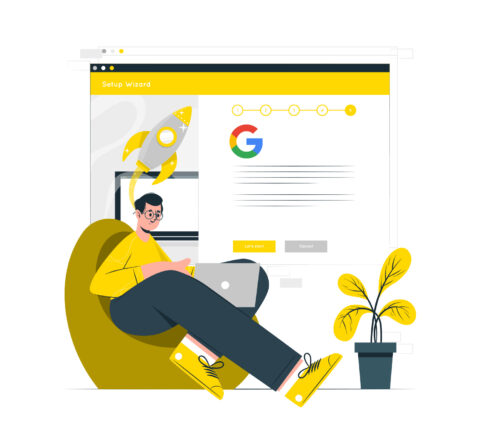Customer satisfaction is the topmost priority for every business. It is used as a metric to track the quality of the end product. With the increasing competition, adopting better methods of product formation surely provides an upper hand.
This is where design thinking comes into picture. It enables a team to come up with impactful creations. It is a human-centric approach to evolve existing products and generate new ideas to serve the customers better. In this article, we’ll tell you everything you need to know about design thinking.
First, let’s get started with the basics!
What is Design Thinking?
Design thinking was introduced to the business world by David Kelley, who is a Stanford Professor and also the founder of design consultancy firm IDEO. It is often defined as a human-cantered approach, used to solve problems creatively. When a team comes across a complex problem, design thinking is used to solve it.
It can be also called a method that utilizes creative and innovative skills to provide solutions to an established problem.
Key Principles of Design Thinking
There are several key principles of Design Thinking which are also reflected in its methodology. We’ll talk about the methodology in the later section of the article; however let us give you an overview of the essential principles in brief here.
User Centricity
As design thinking is all about the ‘user’, it’s natural that the process would revolve around the user, who is a human. It’s essential to step in the shoes of the user to cater to their demands, and solve their problems.
Collaboration
What’s the best way to bring a lot of ideas and consolidate them at one place? The answer is thorough ‘collaboration’. It is a prerequisite of design thinking which leads to development of diverse perspectives, and ideas.
Ideation
An offshoot of previous point, this point states about the importance of ideation or idea generation. A judgment-free zone should be created which facilitates the pioneering of breakthrough ideas. It is ideal that the ‘quality’ rather than the ‘quantity’ of ideas be focused upon.
Experimentation and Iteration
Though the idea generators may be wary about the problems and issues of the consumer, the feedback of the real consumer is must. This is to prevent any sort of bias and get honest feedback. Ideally the identified flaws should be rectified and further reiteration of the process be done until the product or services reaches culmination.
A Bias towards action
‘A good plan violently executed now is better than a perfect plan executed next week.’
Research and hypothesizing is essential however taking actions on the gathered inputs is indispensable. The foremost principle of Design thinking is taking action and solving the problem in real-world context.
What is the purpose of Design Thinking?
So you may be wondering ‘What the big deal is if I stick with the old framework?’ ‘What exactly is the purpose of Design thinking?’
So we, as humans, urge to improve, and when this improvement provides us good money, then what’s better than that? The old framework might have been beneficial for your business growth in the past but don’t get surprised when we tell you that many successful businesses are making billions by acknowledging the value of “design thinking”.
- Many successful companies and organizations such as Apple, Microsoft, Samsung and Toyota are relying majorly on design thinking and that’s what making a difference.
- A data from 2019 shows that in USA alone, about 50% of all the profit spawned by public companies, now goes to only 30 organizations. In comparison, it took almost 109 companies to achieve the same accomplishment in 1975. And Design thinking is the sole factor which has enabled these top companies outperform others.
- Design thinking was often pushed aside by business owners in the past decades. Now it has become a significant driving force, helping in the overall progress. Through its use, you can outsmart your rivals. It will help you employ means such as selling the same products as others but with a twist of innovation, and subsequently you’ll see your business grow multiple times.
- Design Thinking helps in tackling creative challenges. By acquiring this quality, you’ll start watching problems from a different perspective. Your brain will be flooded with fresh ideas. Serious brainstorming is involved in the thinking process of product formation which will help in creating an invaluable experience to end clients.
How to use Design Thinking Methodology?
So now we have gone through the theory behind Design Thinking. Now it’s time to know the way we can use Design Thinking in our lives to solve problems and make this world a better place.
1. Empathize
- This is the first step of design thinking which provides you an opportunity to immerse yourself in the context of the question by gaining an emphatic understanding of the problem.
- Numerous approaches can be followed to understand the complete context of the problem. These approaches can help you drag the information needed to begin the process. For instance interviewing is a good approach to get the idea of what the target group cares about.
- Now for example, if you want to create something to help blind people, have a chat with them, and understand their situation and find what difficulties they are facing. For instance, you might come to know they wish to forage into the world of entertainment. By redoing the process with many other blind people, you may end up discovering that they find stories and fiction, entertaining.
2. Define
- Now that you’ve gathered the information you took from the Empathize stage, you enter in ‘define’ stage.
- In this stage, you put together all the information that you have gathered for examination.
- Analyzing the observations and information to identify the core of the problem is main objective of this stage. So in our example, by conducting continuous interviews, you’ll find that the reading speed is significantly slower in Braille. The thrill of the story is also lost in the process.
- Now you know, on what section you’ve to work upon.
3. Ideate
- Now that you’re done analyzing the core part of the problem, you are ready to start generating the ideas. This stage is the essence of creative activities in the design thinking process.
- Starts thinking of multiple ideas to tackle the difficulties blind people are facing. This is where you should start thinking out of the box and uncork the creativity to let the innovations happen.
- One idea you may work upon is converting the stories of the books in an audible form. This can be done by creating a portable headphone connected to a device stored with stories and fictions, narrated by a good speaker. With just one click, listening to great stories will be possible.
4. Prototype
- Turning your ideas into the physical form will help you investigate the problem in a lot easier way. This way you can gain feedback from the people.
- Start with a scaled-down version of your device that’s just good enough to be tested and improve it over time based on every feedback. Make sure that the prototype of the headphone must not cause any comfort issue. The device should be easy to use and the voice must be clear.
5. Test
- This is the final phase, which will tell you if you’ve done a great job or not. The final prototype would be presented before the real users. It’s upon them to decide, whether the prototype is up to the mark or not.
- Don’t defend your idea in case they don’t like it, the point is to know what works and what doesn’t. Ask them if the device is easy to use and comfortable. Consider their feedback, then go back to ideation or prototyping and apply your learning. Repeat the process until your prototype solves the real problem.
How to Apply the Design Thinking Framework?
Design thinking isn’t only concerned with designing products or solving corporatized problems. The approach can be used by you in solving day to day, real life issues as well. Here are some ways you could apply Design Thinking framework in your life.
- Invest a quality amount of time to think and formulate ideas. There is an old saying, “An ounce of prevention is worth a pound of cure”. Prevention of a problem before it happens is easier in comparison to fixing the same after its occurrence.
- Create a mid-fidelity prototype to know the rough idea of your product and to examine its functioning. Don’t start investing many resources on a single prototype as there is no guarantee that it will be perfect and final. Keep making some changes every time you encounter a fault.
- Listening to others and seeking their advice is important. It won’t cost you anything and it will be up to you to consider their suggestions. Learning from other’s mistakes will help you prevent overusing the resources and wasting time.
- Customer feedback is also important in developing your design thinking ability. In most practice projects, you may not be provided with feedback. In that case, don’t hesitate to ask for one yourself. Be open to the change and welcome the user feedback.
Conclusion
Having a creative mind-set undoubtedly provides an edge over others. The tips and information we delivered will definitely further your competency in design thinking. We wish you all the best for the same.
Related Post
Publications, Insights & News from GTECH








